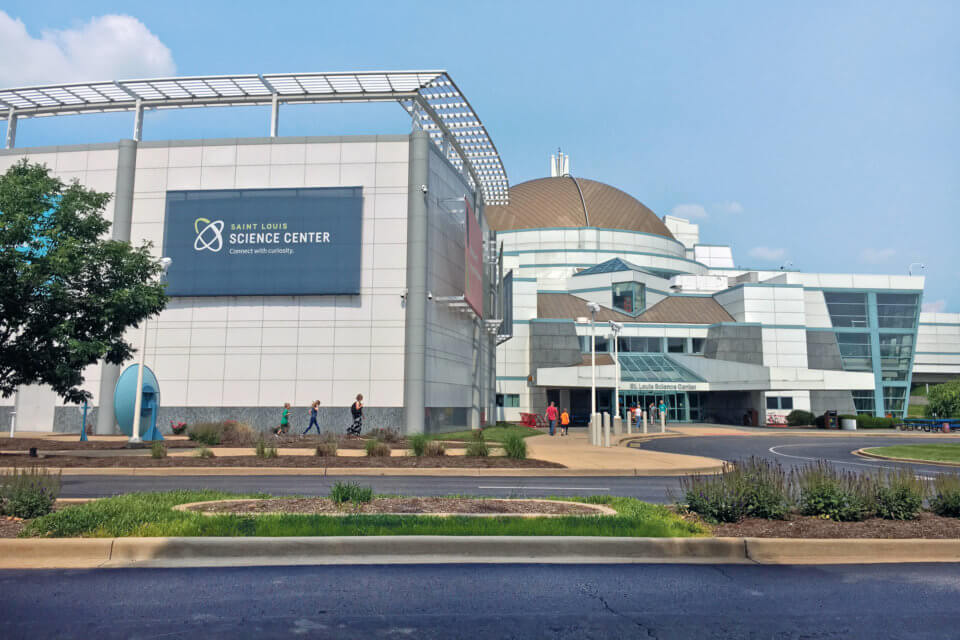ST. LOUIS, MO.–Jan. 13, 2022- Due to the surge of the Omicron variant of COVID-19 within the St. Louis community, the Saint Louis Science Center announced it will temporarily close for approximately two weeks, effective at 4:30pm on Monday,Jan. 17. The organization plans to reopen at 9:30am on Thursday, Feb. 3, but will continue to… Continue reading
Astronomy Fact of the Day: January 13, 2022
January 13, 2022 On this date in 1990, astronauts aboard the space shuttle mission STS-32 were woken up using the song Attack of the Killer Tomatoes. This was in reference to the student SEEDS experiment that sent 12.5 million tomato seeds into orbit aboard the Long Duration Exposure Facility (LDEF). To read more about the… Continue reading
Lobster Claw Collected from the North Atlantic
This large lobster claw specimen still has the knuckle joint and shoulder section attached, although it is missing the lower portion of the claw. Lobsters use their claws to catch food and battle predators as well as other lobsters. This claw is the larger of the two front claws, called the crusher claw, and is… Continue reading
Astronomy Fact of the Day: January 12, 2022
January 12, 2022 Visible in the northern sky is Polaris – the North Star, surrounded by the Big Dipper, and Cassiopeia. However, the Diné, or Navajo, see the Big Dipper as Náhookòs Bi’kà’ (“Male Revolving One”) and Cassiopeia as Náhookòs Bi’áád (“Female Revolving One”) who sit on either side of Polaris or Náhookòs Bikò‘ (“Central… Continue reading
Astronomy Fact of the Day: January 11, 2022
January 11, 2022 On this date in 1787, only 6 years after his discovery of Uranus, William Herschel discovered Uranus’ largest moons Titania and Oberon. Almost nothing was known of these moons until Voyager 2 passed by in 1986. Even following this flyby, we still known little about these moons. What was discovered is they… Continue reading
Astronomy Fact of the Day: January 10, 2022
January 10, 2022 The theoretical coldest temperature possible is referred to as absolute zero, or -459.67°F (-273.15°C). For reference, the coldest temperature ever recorded on Earth was -128.6°F (-89.2°C) in Vostok, Antarctica, 1983. The coldest temperature recorded in the solar system was in the permanently shadowed craters near the south pole of the moon that… Continue reading
Astronomy Fact of the Day: January 9, 2022
January 9, 2022 Mercury and Venus are both considered inferior planets, which means they orbit closer to the Sun than the Earth. Due to this, both planets experience phases when viewed from Earth, just like the moon. This phenomenon was first observed by Galileo in 1610 and provided support for the heliocentric model of the… Continue reading
Night Sky Update: January 7 – January 15, 2022
This is the Saint Louis Science Center’s NIGHT SKY UPDATE for the week of Friday, January 7, 2022. Information updated weekly or as needed. Times given as local St. Louis time which is Central Standard Time (CST). For definitions of terminology used in the night sky update, click the highlighted text. If relying on times… Continue reading
Astronomy Fact of the Day: January 8, 2022
January 8, 2022 Tonight the moon will be in a waxing crescent phase. It will be clearly visible in the southwest around 8 pm. If you have an unobstructed view, Jupiter will also be visible about 5 degrees above the horizon. To measure 5 degrees, hold your first three fingers perpendicular to the horizon at… Continue reading
Astronomy Fact of the Day: January 7, 2022
January 7, 2022 Galileo Galilei discovered four moons of Jupiter on this date in 1610. This is one of the most significant discoveries ever made with a telescope. Today these moons are named Io, Europa, Ganymede and Calisto. The four Galilean moons of Jupiter and views of their surface. Image credit: NASA.








